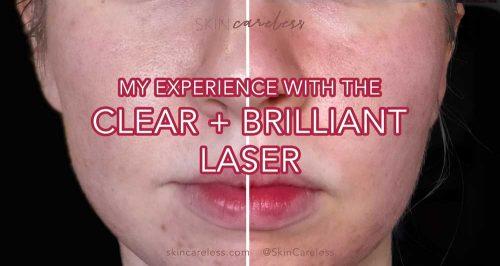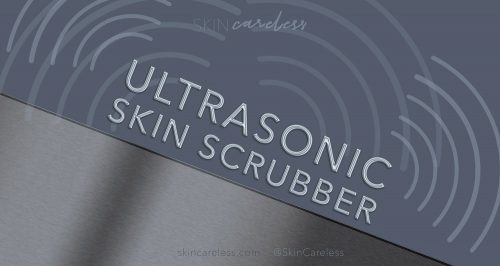You’ve probably heard about the latest trend in non-invasive skin procedures, dermaplaning. And yes – it is just a fancy word for face shaving.
Dermaplaning gives incredible looking before-and-afters and serves huge shock value on Instagram, when you watch that satisfying hair-removal in one fell swoop. It’s like literally scraping away your old skin and being born again.
Men have been shaving their faces for centuries with no issues, but somehow it’s only recently become somewhat acceptable for women to shave their faces. Why is that?
It’s because dermaplaning touted as not mere hair removal but being the latest super-exfoliation skin procedure that’s cheap and fast. So what exactly are the benefits to dermaplaning?
Why shave your face?
Dermaplaning isn’t quite like the face shaving we think of when you see a barbershop. Dermaplaning comes from the two words “derma” – meaning skin – and “plane” meaning to shave down and even out. It’s literally using a very sharp blade to extremely gently remove the upper layers of dead skin.
There are two main benefits to dermaplaning:
- Removes dead skin (i.e. exfoliates)
- Removes vellus hairs
The sharp dermaplaning blade/razor will scrape off the entire dead outer layer of skin. This easily removes stubborn flakes and rough patches, and creates a smooth and level surface that’s fresh and ready to be treated with a facial or other skin care. If you think about it, all your moisturisers and serums will be able to get right to the lower most hydrated layers straight away.
Vellus hairs or baby hairs are the soft, transparent peach fuzz that lives on your forehead, around your brows, on the upper lip and around the sideburns and jaw. While they’re pretty much invisible, they can be seen under harsh lighting and catch on to makeup like nobody’s business. They also absorb light and create a more matte skin finish, rather than the glowing glass-skin trend of recent years.
What are the results of dermaplaning?
Dermaplaning will bring you smoother, glowier-looking skin. Like – baby butt smooth. You’ll never want to stop touching your face.
By taking away the dry skin cells and tiny hair, the result is a totally fresh canvas that absorbs skin care readily and looks glowing. Foundation will go on unbelievably smoothly on top of hairless and flake-free skin and, of course, as a bonus you’ll be temporarily hair-free! (and don’t worry, they won’t grow back any thicker or darker, that’s just a myth!)
The peak results last a few days, and I feel a gradual return to normal over 2-3 weeks.
In-office vs. at-home dermaplaning
Dermaplaning is a treatment you can quite easily do yourself. Of course, there are aestheticians and dermatologists who dermaplane in-office as part of their services. These professionals have access to extremely sharp blades and magnifying mirrors that mean they can achieve more thorough results and do it more safely. So it’s up to you whether you’d like to do it yourself or visit a professional.
But if you’d like to try it yourself and see if it’s for you, you totally can!
For at-home dermaplaning, you’ll need to purchase small face razors. The best shave will come from straight razors with no safety aka. just a straight blade. In the beauty world, these are referred to as ‘eyebrow razors’.
You can buy facial razors from several retailers, especially asian beauty stores. I use SHISEIDO 3 Piece Prepare Facial Razor but there’s a huge range to choose from.
They can be tricky to learn how to use so be careful – the first time I cut myself pretty badly! Proper caution needs to be taken not to inure yourself with the blade! Here’s how to do it safely:
How to dermaplane at home
Step 1: Cleanse
Dermaplaning should be done on dry skin with no product. So go ahead and cleanse your face like normal, taking care to get every trace of makeup off and pat dry well.
Step 2: Shave
Hold your skin taught with one hand to flatten out any bumps you’re likely to get caught on as much as you can, lay your small facial blade almost parallel to your skin, and with minimal to no pressure, gently shave in very light, short downwards strokes. Wipe the blade on a piece of tissue frequently to remove any oils or hairs that get caught up. I can’t stress enough that you should apply almost NO pressure – that’s a surefire way to cut yourself.
I start at my cheekbone and work my way down my cheek, then across my chin and upper lip, to the other cheek, then across my forehead. I totally skip my nose because the contours there are just too tricky for me.
Step 3: Aftercare
After, I layer on loads of moisturising products and sunscreen and avoid makeup the next day if possible. I use the same razor maybe 3-5 times, wiping down with alcohol after each use.
Most importantly, leave your skin to rest for the next few days! Skip any usual acid treatments or scrubs and let it settle down. The fresh skin will be easily irritated.
I dermaplane myself around once a month, though you could do it more often if you love the results.
Dermaplaning yourself at home is quick and easy and provides a nice little visible boost to your skin. It’s the ultimate instant gratification treatment and can really level up your makeup game ahead of a big event. But if you’re scared to try, maybe have a go with an ultrasonic skin scrubber for a scraping situation that doesn’t carry the risk of cutting your skin by accident.






[…] trying out The Ordinary’s Mandelic Acid + HA), a great choice for a special event is Dermaplaning, which also offers hair removal benefits. If you’re looking for something more intense, a […]